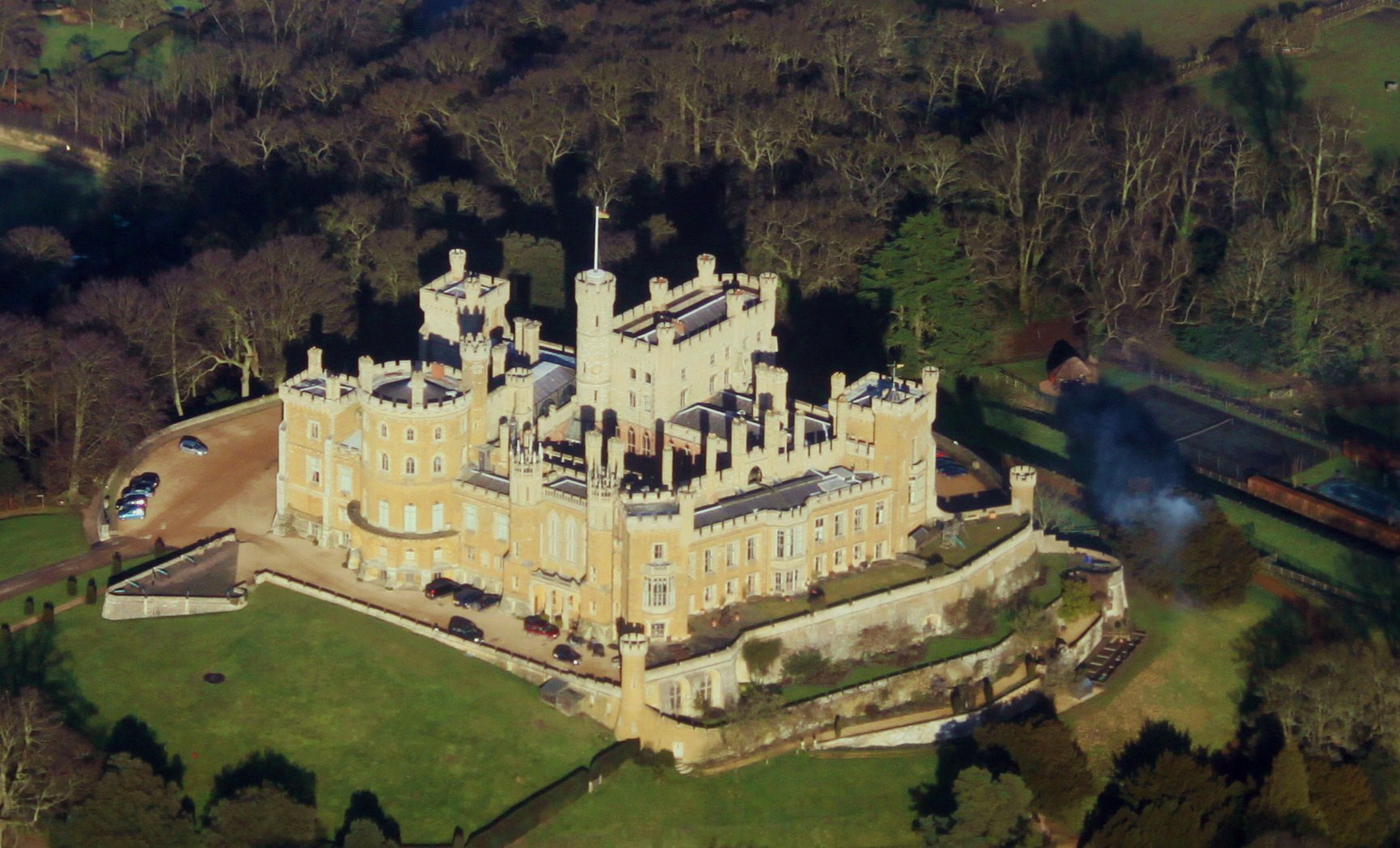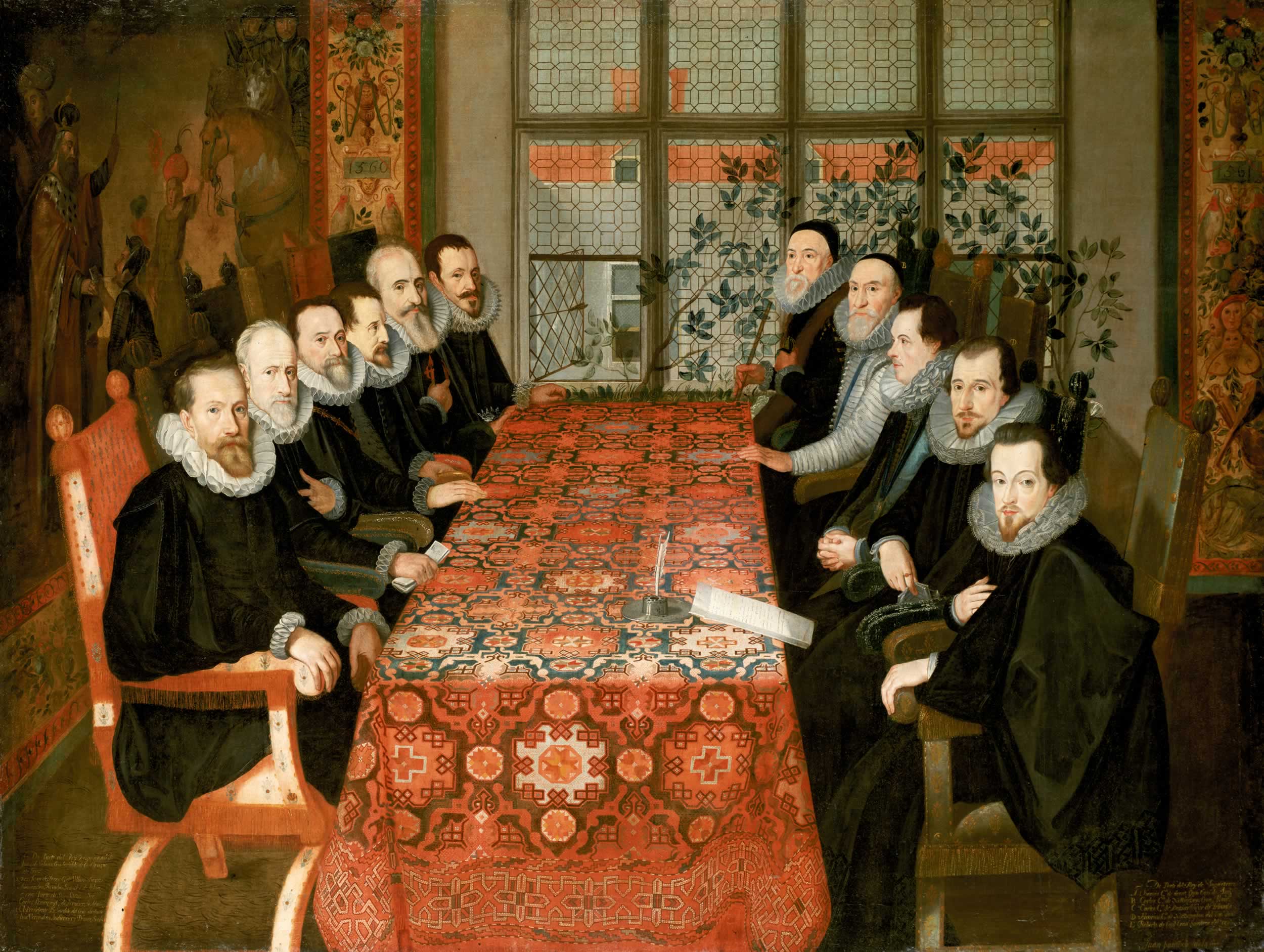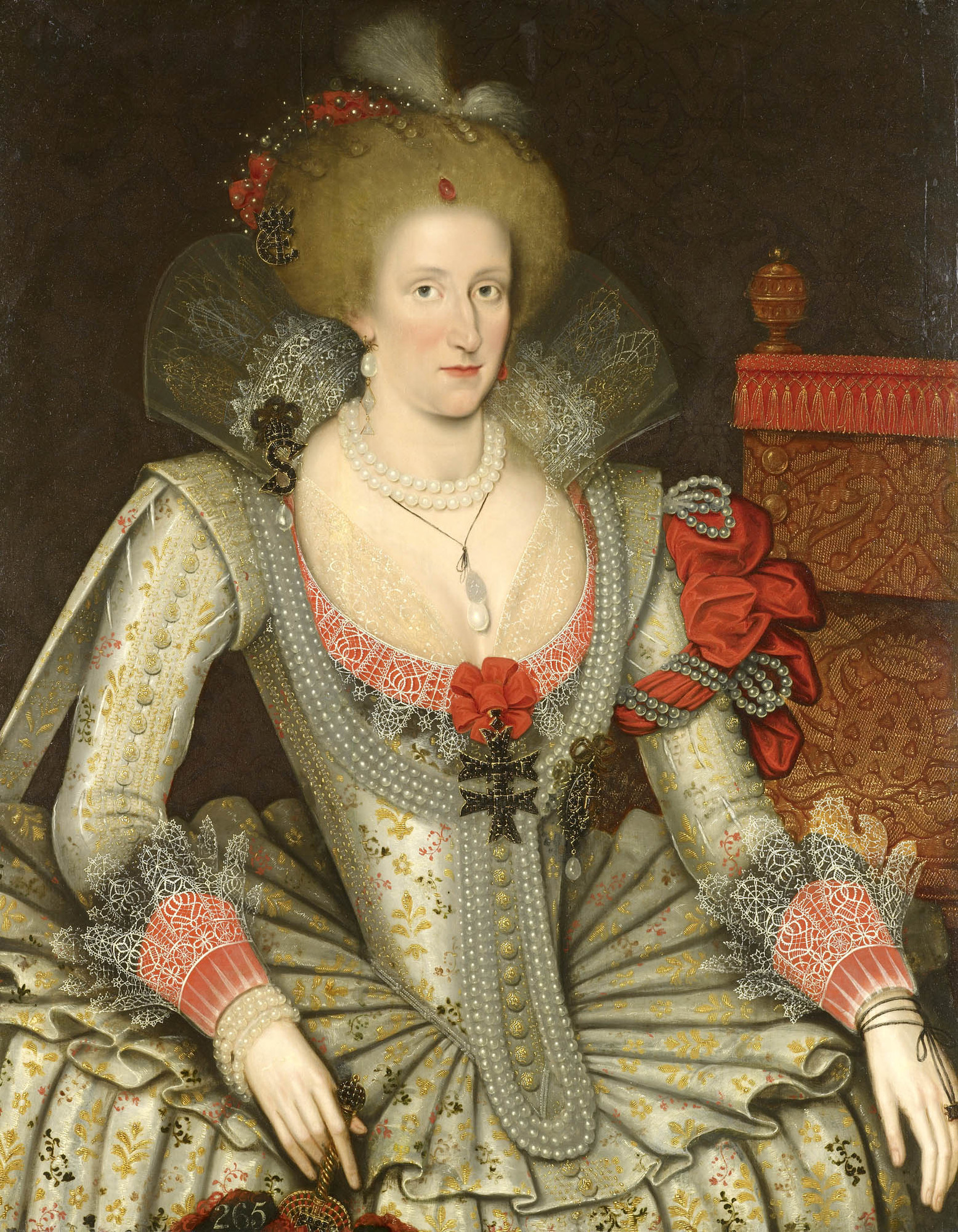|
Bedford House (Strand)
Bedford House also called Russell House was the Elizabethan and Jacobean London home of the Russell family, Earls of Bedford, situated on the site of the present Southampton Street on the north side of the Strand. It was demolished in 1704 after the family had relocated to Bloomsbury. Origins The site was on or adjacent to the lodging or Inn of the Bishops of Carlisle on the south side of the Strand. John Russell, 1st Earl of Bedford acquired the land, Longacre, in May 1552 at the fall of Protector Somerset. The Russell family already had a house on the south side of the Strand, with land running down to the Thames near Ivybridge Street. This property passed to Bridget Hussey, the widow of Francis Russell, 2nd Earl of Bedford, and was sold. Bedford House was built in the years before 1590 for the young Edward Russell, 3rd Earl of Bedford, and wife, Lucy, Russell, Countess of Bedford. Only small dwellings and stables are known to have existed on the site previously. Architecture ... [...More Info...] [...Related Items...] OR: [Wikipedia] [Google] [Baidu] |
Earl Of Bedford
Earl of Bedford is a title that has been created three times in the Peerage of England and is currently a subsidiary title of the Dukes of Bedford. The first creation came in 1138 in favour of Hugh de Beaumont. He appears to have been degraded from the title three or four years after its creation. The existence of his title altogether has been doubted. It is discussed by R. H. C. Davis on the basis of the chronicle evidence. However, it now appears to be accepted by historians that Hugh did receive the earldom of Bedford in 1138. The second creation came in 1366 in favour of the French nobleman Enguerrand VII, Lord of Coucy. After Richard II came to the throne in 1377, Bedford resigned the title to the Crown. The third creation came in 1550 in favour of John Russell, 1st Baron Russell. For more information on this creation, see Duke of Bedford (1694 creation). Earls of Bedford, first creation (1138) * Hugh de Beaumont, 1st Earl of Bedford (born 1106) Earls of Bedford, second ... [...More Info...] [...Related Items...] OR: [Wikipedia] [Google] [Baidu] |
Lucy Russell, Countess Of Bedford
Lucy Russell, Countess of Bedford ( Harington; 1581–1627) was a major aristocratic patron of the arts and literature in the Elizabethan and Jacobean eras, the primary non-royal performer in contemporary court masques, a letter-writer, and a poet. She was an ''adventurer'' (shareholder) in the Somers Isles Company, investing in Bermuda, where Harrington Sound is named after her. Parentage and marriage Lucy Harington was the daughter of Sir John Harington of Exton, and Anne Keilway. Although the exact date of her birth is unknown, she was christened on 25 January 1581. She was well-educated for a woman in her era, and knew French, Spanish, and Italian. She was a member of the Sidney/Essex circle from birth, through her father, first cousin to Sir Robert Sidney and Mary, Countess of Pembroke; she was a close friend of Essex's sisters Penelope Rich and Dorothy Percy, Countess of Northumberland, and the latter named one of her daughters Lucy after her. Lucy Harington marri ... [...More Info...] [...Related Items...] OR: [Wikipedia] [Google] [Baidu] |
Demolished Buildings And Structures In London
Demolition (also known as razing and wrecking) is the science and engineering in safely and efficiently tearing down buildings and other artificial structures. Demolition contrasts with deconstruction, which involves taking a building apart while carefully preserving valuable elements for reuse purposes. For small buildings, such as houses, that are only two or three stories high, demolition is a rather simple process. The building is pulled down either manually or mechanically using large hydraulic equipment: elevated work platforms, cranes, excavators or bulldozers. Larger buildings may require the use of a wrecking ball, a heavy weight on a cable that is swung by a crane into the side of the buildings. Wrecking balls are especially effective against masonry, but are less easily controlled and often less efficient than other methods. Newer methods may use rotational hydraulic shears and silenced rockbreakers attached to excavators to cut or break through wood, steel, ... [...More Info...] [...Related Items...] OR: [Wikipedia] [Google] [Baidu] |
Russell Family
{{disambiguation ...
Russell family may refer to: * Clan Russell of Scotland, with connections to the Dukes of Bedford **Russell family, an English aristocratic family headed by the Duke of Bedford **Russell family, British aristocracy, who were created baronets * Russell family (American political family), a Georgia family whose members have held prominent positions in the state government and U.S. government * Russell family (''Passions''), a fictional family on ''Passions'' See also * Russell (surname) Russell, also Rosel, Rousel, Roussel, Russel or Rossell. The origin of the name has historically been subject to disagreement, with two distinct origins proposed. Early genealogists traced the Russel/Russell family of Kingston Russel from Anglo- ... [...More Info...] [...Related Items...] OR: [Wikipedia] [Google] [Baidu] |
Former Houses In The City Of Westminster
A former is an object, such as a template, gauge or cutting die, which is used to form something such as a boat's hull. Typically, a former gives shape to a structure that may have complex curvature. A former may become an integral part of the finished structure, as in an aircraft fuselage, or it may be removable, being used in the construction process and then discarded or re-used. Aircraft formers Formers are used in the construction of aircraft fuselage, of which a typical fuselage has a series from the nose cone to the empennage, typically perpendicular to the longitudinal axis of the aircraft. The primary purpose of formers is to establish the shape of the fuselage and reduce the column length of stringers to prevent instability. Formers are typically attached to longerons, which support the skin of the aircraft. The "former-and-longeron" technique (also called stations and stringers) was adopted from boat construction, and was typical of light aircraft built until th ... [...More Info...] [...Related Items...] OR: [Wikipedia] [Google] [Baidu] |
Francis Manners, 6th Earl Of Rutland
Francis Manners, 6th Earl of Rutland, KG KB (1578–1632) was an English nobleman. Despite a brief imprisonment for his involvement in the Essex Rebellion of 1601, he became prominent at the court of James I. He lived at Belvoir Castle in Leicestershire. In 1618 three women, the "Witches of Belvoir", were accused of witchcraft for having allegedly caused the deaths of his two young sons. Biography Francis Manners was the second son of John Manners, 4th Earl of Rutland, and Elizabeth Charlton (died 1595), the daughter of Francis Charlton of Apley Castle, Shropshire. In 1598, he went abroad, travelling through France, Germany, and Italy, probably in the company of the former school teacher Robert Dalllington and Inigo Jones. On his return to England he took part, along with his older brother Roger and their younger brother George, in the 1601 rebellion of Robert Devereux, 2nd Earl of Essex, and was imprisoned in the Poultry Counter. He was fined a thousand marks and commit ... [...More Info...] [...Related Items...] OR: [Wikipedia] [Google] [Baidu] |
Francis Russell, 4th Earl Of Bedford
Francis Russell, 4th Earl of Bedford PC (1587 – 9 May 1641) was an English nobleman and politician. He built the square of Covent Garden, with the piazza and St Paul's Church, employing Inigo Jones as his architect. He is also known for his pioneering project to drain The Fens of Cambridgeshire. Early life He was the only sonCollins, Arthur''The Peerage of England; Containing a Genealogical and Historical Account of All the Peers of that Kingdom Etc. Fourth Edition, Carefully Corrected, and Continued to the Present Time'' Volume 1, pages 258–278. Woodfall, H et al.1768 of William Russell, 1st Baron Russell of Thornhaugh and his wife Elizabeth Long, to which barony he succeeded in August 1613. For a short time previously he had been Member of Parliament for the borough of Lyme Regis. In 1623 he was made Lord Lieutenant of Devon and on 3 May 1627 became Earl of Bedford on the death of his cousin Edward Russell, 3rd Earl of Bedford. In 1621 Russell was one of the thirt ... [...More Info...] [...Related Items...] OR: [Wikipedia] [Google] [Baidu] |
Somerset House
Somerset House is a large neoclassical architecture, neoclassical building complex situated on the south side of the Strand, London, Strand in central London, overlooking the River Thames, just east of Waterloo Bridge. The Georgian era quadrangle is built on the site of a Tudor period, Tudor palace ("Old Somerset House") originally belonging to the Edward Seymour, 1st Duke of Somerset, Duke of Somerset. The present Somerset House was designed by William Chambers (architect), Sir William Chambers, begun in 1776, and was further extended with Victorian era outer wings to the east and west in 1831 and 1856 respectively. The site of Somerset House stood directly on the River Thames until the Victoria Embankment was built in the late 1860s. The great Georgian era structure was built to be a grand public building housing various government and public-benefit society offices. Its present tenants are a mixture of various organisations, generally centred around the arts and education. ... [...More Info...] [...Related Items...] OR: [Wikipedia] [Google] [Baidu] |
Death And Funeral Of Anne Of Denmark
Anne of Denmark (1574–1619) was the wife of James VI and I, and queen consort of Scotland from 1589, and queen consort of England and Ireland from the union of the Scottish and English crowns in 1603 until her death on 2 March 1619 at Hampton Court. She was buried at Westminster Abbey on 13 May. Final illnesses Several letters mention the illnesses of Anne of Denmark and the royal physician Theodore de Mayerne left extensive Latin notes describing his treatment of Anne of Denmark from 10 April 1612 to her death. From September 1614 Anne was troubled by pain in her feet and swellings, which were a form of gout and dropsy and restricted her movements, as described in the letters of her chamberlain Viscount Lisle and the countesses of Bedford and Roxburghe. She was well enough to go hunting in August 1617, but later in the year, Anne's bouts of illness became debilitating. The letter writer John Chamberlain noted, "the Queen continues still ill disposed and though she would ... [...More Info...] [...Related Items...] OR: [Wikipedia] [Google] [Baidu] |
Anne Of Denmark
Anne of Denmark (; 12 December 1574 – 2 March 1619) was the wife of King James VI and I. She was List of Scottish royal consorts, Queen of Scotland from their marriage on 20 August 1589 and List of English royal consorts, Queen of England and Ireland from the union of the Scottish and English crowns on 24 March 1603 until Death and funeral of Anne of Denmark, her death in 1619. The second daughter of King Frederick II of Denmark and Sophie of Mecklenburg-Güstrow, Anne married James at age 14. They had three children who survived infancy: Henry Frederick, Prince of Wales, who predeceased his parents; Elizabeth Stuart, Queen of Bohemia, Princess Elizabeth, who became Queen of Bohemia; and James's future successor, Charles I of England, Charles I. Anne demonstrated an independent streak and a willingness to use factional Scottish politics in her conflicts with James over the custody of Prince Henry and his treatment of her friend Barbara Ruthven, Beatrix Ruthven. Anne app ... [...More Info...] [...Related Items...] OR: [Wikipedia] [Google] [Baidu] |
Whitehall Palace
The Palace of Whitehall – also spelled White Hall – at Westminster was the main residence of the English monarchs from 1530 until 1698, when most of its structures, with the notable exception of Inigo Jones's Banqueting House of 1622, were destroyed by fire. Henry VIII moved the royal residence to Whitehall after the old royal apartments at the nearby Palace of Westminster were themselves destroyed by fire. Although the Whitehall palace has not survived, the area where it was located is still called Whitehall and has remained a centre of the British government. Whitehall was at one time the largest palace in Europe, with more than 1,500 rooms, before itself being overtaken by the expanding Palace of Versailles, which was to reach 2,400 rooms. At its most expansive, the palace extended over much of the area bordered by Northumberland Avenue in the north; to Downing Street and nearly to Derby Gate in the south; and from roughly the elevations of the current buildings fac ... [...More Info...] [...Related Items...] OR: [Wikipedia] [Google] [Baidu] |
Alexander Home, 1st Earl Of Home
Alexander Home, 1st Earl of Home and 6th Lord Home (c. 15665 April 1619), was a Scottish nobleman and Lord Warden of the Marches, Lord Warden-general of all the March. He succeeded as the 6th Lord Home, a Lord of Parliament in the Peerage of Scotland, in 1575, and he was created Earl of Home in the Peerage of Scotland in 1605. Career Early life Born about 1566, he was son of Alexander Home, 5th Lord Home, by his second wife. On the death of his father in 1575 he was placed under the guardianship of Andrew Home, commendator of Jedburgh. The custody of the Hume Castle, castle of Home had been committed by the Regent Morton to the widow of the fifth baron. On 30 November 1578, she and her husband complained that the commendator refused to deliver it up. He was ordered to do so, but in December 1579 it was arranged that the castle should be retained by Lord Home and the commendator, his tutor, in his name. In 1581 Alexander Hume of Manderston and others were ordered to restore to Ho ... [...More Info...] [...Related Items...] OR: [Wikipedia] [Google] [Baidu] |






